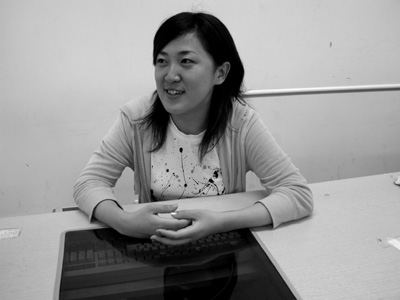
From Kindergarten to Middle School, Park went to the Nishi Osaka Chosun School, a North Korean school in Osaka. "Mostly, students who did not have a definite nationality because of their displacement during Japanese colonization enrolled in this school, and we had no idea of where we were from," says Park. The school was founded when Korea was liberated from Japanese colonization and, due to the lack of government coordination, many Koreans had to stay in Japan.
When Park was in fifth grade, the atmosphere at school was gloomy, somewhat different from the atmosphere in South Korea, due to the death of Kim Il-sung. ?eachers wore ribbons to cherish the memory of the deceased person. Most people were crying, even the students, says Park. She laughs, "I remember, I was very confused about whether I should cry with them or not."
To describe the environment of the school, Park says, “The basic subjects that we learned were similar to those in Japanese schools, however, the textbooks were made internally by the Chosun School, and were free, based on communist ideology. When Park was in middle school, more subjects related to North Korea were taken, including "The Contemporary Chosun" and "The History of the Chosun Revolution." Moreover, the school made it mandatory to learn the sayings of Kim Il-sung, the former ruler of North Korea.
Among the many events, the most memorable experience for Park was actually stepping on North Korean soil, to give a performance to Kim Jung-il, government officials, and the selected Pyongyang citizens to celebrate the New Year. According to Park, 100 students were selected to give a seven-minute Chosun dance performance, somewhat like gymnastics, wearing Hanbok, Korean traditional clothing. The theme of the performance was giving gratitude to Kim Jung-il for his support when there was an earthquake in Kobe, Japan.
"I was surprised to see how developed Pyongyang was; the hotels were well made and they also had a department store. The television showed cartoon characters such as the ?lever raccoon, which also was a figure in our textbooks back in Japan," says Park.
After spending nine years at a North Korean school, Park transferred to a Japanese high school because the North Korean schools were not officially accredited. When Park was in her senior year in high school, she had a chance to study at the Ewha Language Institute during her summer. This was the first time that she had visited South Korea.
"When my father sent me to Korea over the summer break, he had already had in mind to have me enrolled at Ewha," says Park. Later, as her father's wish, she decided to learn more and enroll at Ewha. But, as a freshman, Park had difficulties adjusting to her new environment. She had to take Korean language courses every day; she lacked the skills to communicate with people and at that time there was no "buddy" system for foreign students. "It was so hard for me, I sometimes cried in the bathroom on the first floor of the Ewha-POSCO Building," says Park. But now, she has overcome those difficulties and is participating as the chief of the Ewha Campus Tour Leader.
The one thing that helped Park overcome the hardships is her attitude toward life. She says, "Love your friends, your school, and your country. In the environment you are in, be thankful for what you have, and feel the importance of it."

